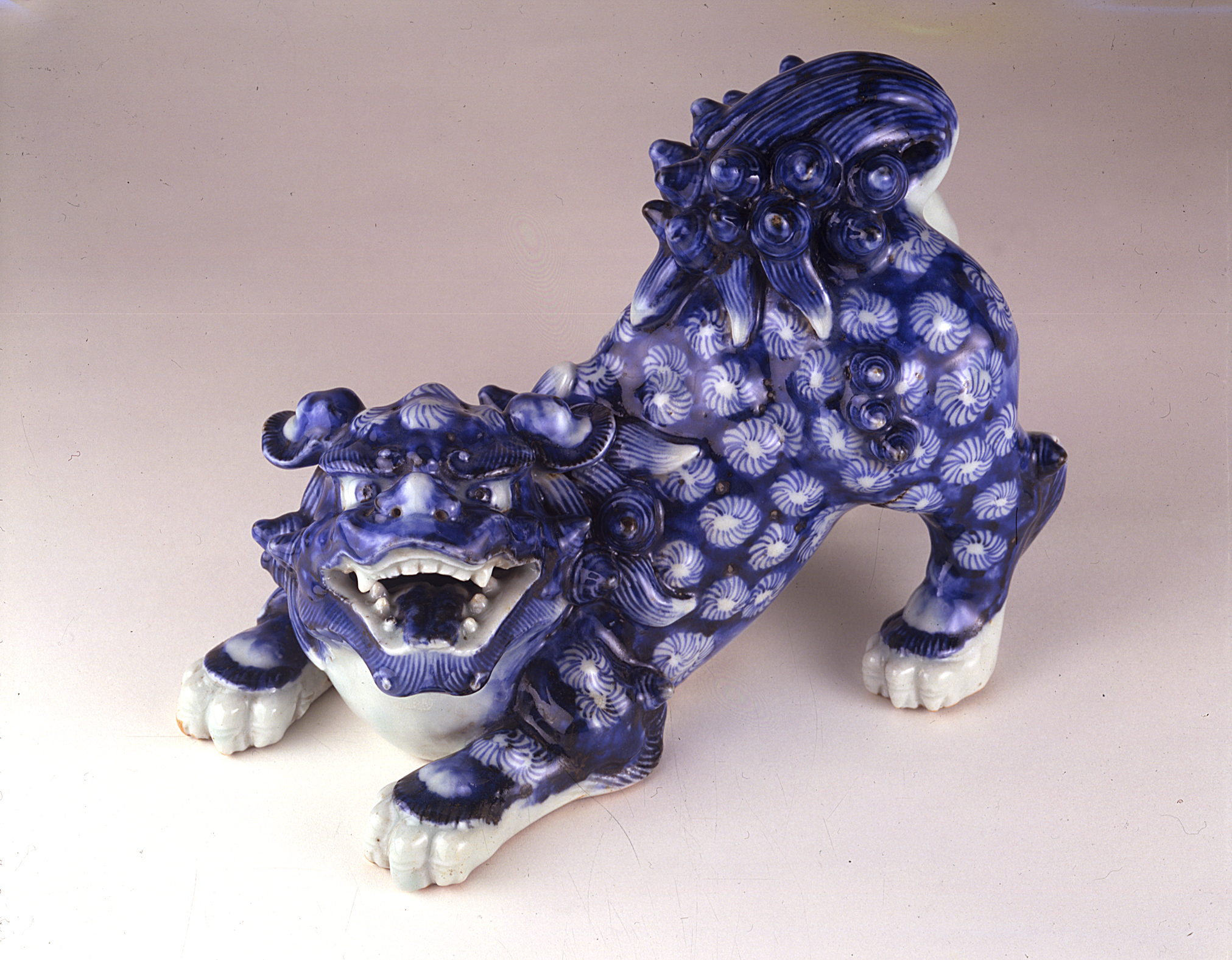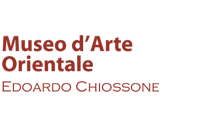
Click here to view image
Chinese lion figurine, karashishi
Collezione Edoardo Chiossone 1898 Genova - lascito testamentario
ambito giapponese
Japan, Seto Owari, first half of the 19th century
figurine
1841 - 1860 - XIX
C-50
Unità di misura: cm; Altezza: 16.2; Larghezza: 22.3; Profondità: 12.4
Giappone, Owari no Kuni, Seto
porcellana dipinta
A magnificent specimen of blue and white Japanese porcelain from Seto, one of the kilns that faced the competition of the international market in the mid-19th century and later exerted significant influence on the Art Nouveau movement.The karashishi, literally "Chinese lion", is a fantastic animal from the Oriental tradition, dear to Buddhist iconography. It always has a positive value, is often depicted in playful attitudes and its roar is said to have the power to reawaken faith. Statuette depicting a Chinese lion (karashishi) in a playful position; resting on the front legs, with the back raised and the jaws open. White porcelain is covered with a blue cover. The underglaze in cobalt blue suggests fur made with spirals and with two different shades of color. This example of white and blue Japanese porcelain comes from Seto, one of the kilns that faced international market competition in the mid-nineteenth century and later exerted significant influences on the Art Nouveau movements. The subject of the karashishi was recurrent in small Japanese decorative statuary; it is an imaginary animal of the Chinese tradition that soon spread to the rest of Asia. It has always positive value, represented in often playful attitudes, its roar is said to have the power to awaken faith. The figure of the karashishi was born in the environment of Chinese Buddhism with apotropaic intent: lions, often a male with a globe between the claws, and the other female with a cub, in the form of statues, had to protect the building. They were placed to defend both from harmful spiritual influences and from malicious people, they were in fact placed at the entrance of temples or palaces. Their figure was then widely used for liturgical furnishings (such as incense burners, like the specimen exhibited in the museum hall), or objects of applied art (statuettes) as in our case.




